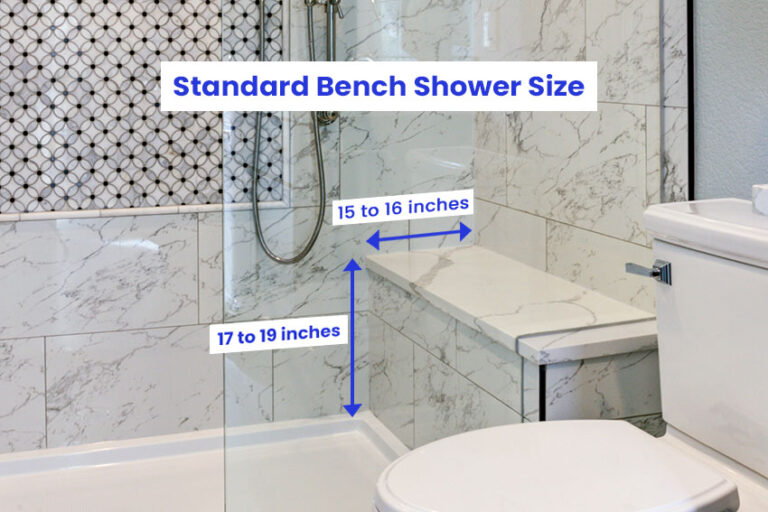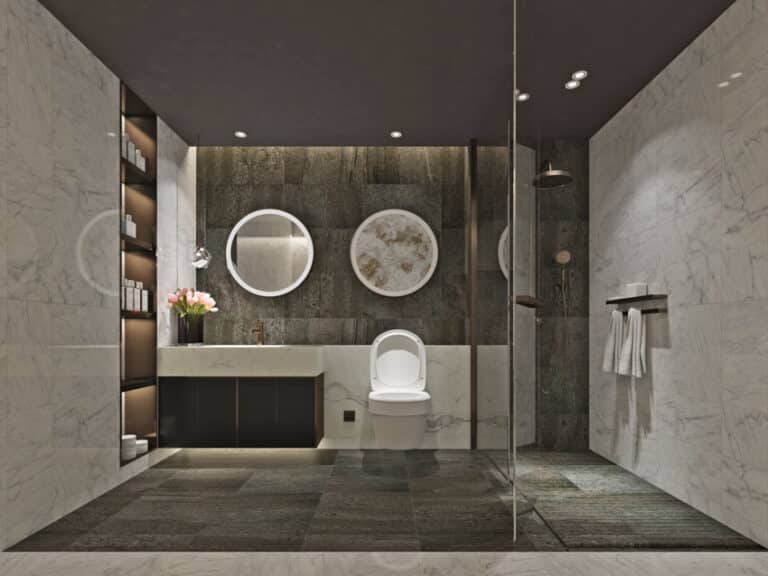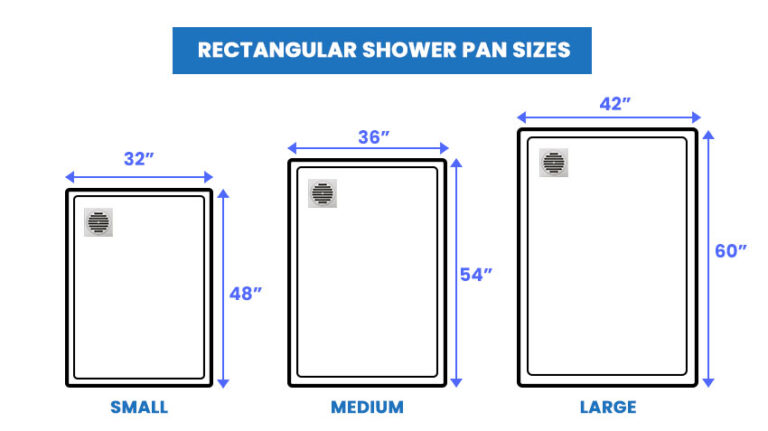How to Choose a Curtain for the Shower: Interior Designer Tips
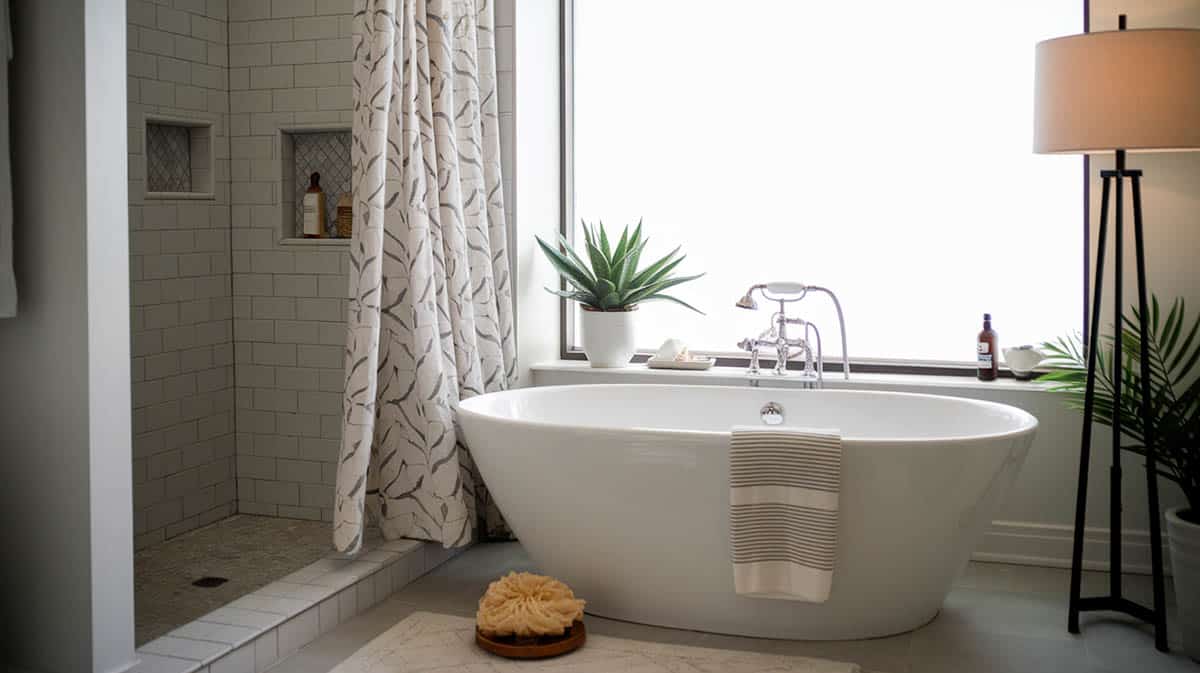
When it comes to the details of a space, particularly the more functional necessities, it’s all too easy to forgo function for the sake of form or vice versa. To avoid this common mistake, aim for balance. There’s always a way to design a solution that is both beautiful and serves its purpose well. In your bathroom, finding just the right shower curtain can be a detail that pulls the entire space together just right. Aside from some paint or changing out accessories, it’s also one of the most effective ways to give your bathroom an impactful makeover without breaking the budget!
Getting The Right Shower Curtain Size
Always start with size that way, when you find a look you love, you’ll be sure it’s the right fit. Standard shower curtains are sized to accommodate a standard 60” wide tub or shower.
The three most common sizes are; 70” x 70”, 70” x 72”, or 72” x 72”. You will find manufacturers that make oversized or “luxury” shower curtains that are larger as well, though, they may be harder to come by.
If you have the standard 60” tub, the standard size is excellent and will give you the most design flexibility. To determine the correct length, measure from the curtain rod down (don’t forget to account for your hanging hardware) and aim to have a 4” minimum of overlap with your tub – but longer (6-8”) is preferred and usually seen as more high end.
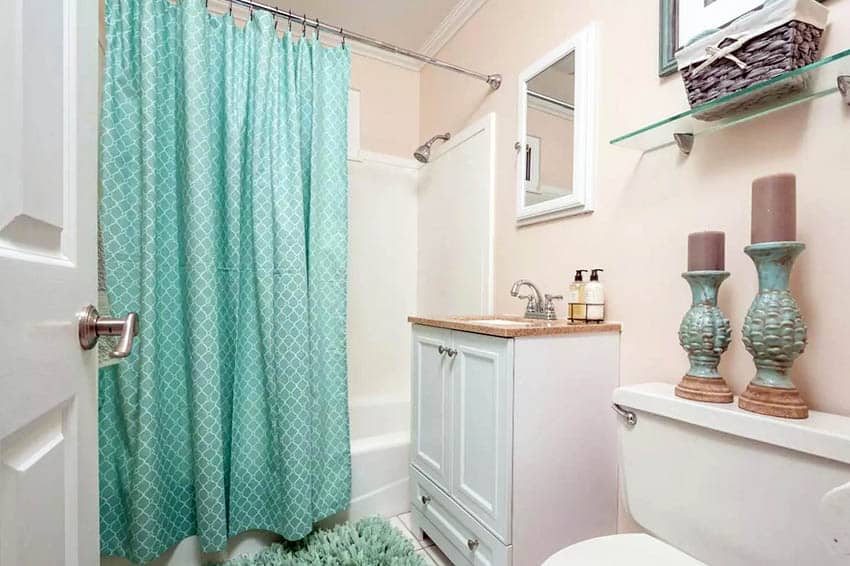
If you have an atypical shower or tub size, the best way to determine curtain width is to measure the width and add twelve inches. This will allow you to cover the span nicely without being too taut, while getting those nice, gentle folds in the material that always look so elegant. When in doubt – custom size is always an option.
When it comes to hanging hardware, some designs have hardware integrated (think metal circles at the top, like your window drapery), but you can also find some beautiful decorative hanging hardware in a variety of colors and styles to support your design aesthetic – we always recommend selecting any decorative bath hardware alongside your shower curtain to ensure they are cohesive.
Designer Tips For Choosing The Best Curtain Material
Once your size is narrowed down, it’s time to consider the materials. For instance, opting for waterproof and washable materials can maintain the cleanliness of your bathroom and extend the lifespan of the product.
Traditionally, shower curtains come in various materials, including cotton blend/decorative, microfiber, polyester, or vinyl – listed of course, in my subjective descending order of quality – but each has a place and a purpose.

Vinyl curtains can be a great option as they’re cost-effective, you don’t need a shower liner with them, and they are a one-stop shop that’s easily cleanable and will last for years. There are colorful or clear plastic products that are waterproof, washable, and can match a variety of bathroom decor.
The polyester blend options are nice because they have a softer touch, you can still get away with a liner, and they feel a bit elevated from their vinyl counterparts.
Microfiber curtains are soft to the touch and offer an elevated aesthetic. They should be used in well-ventilated bathrooms as they take moisture from the air, and the ventilation will help them stay dry.
Cotton-blend and decorative shower curtains are typically the preferred options among designers and homeowners alike. These fabric curtains, like microfiber, are machine cleanable, should be used with a liner, and come in a variety of materials, textures, patterns, and colors that will help tie together the aesthetic of your bathroom with little effort.
Remember – the curtain, though primarily a functional piece in your bathroom, can do a lot for the beauty of the space. You should also consider the style, including decorative hooks, bath towels, mats, and hardware finishes to complete the area.
Consider your options and select your curtains alongside the bathroom floor, decorative rods, and wall tiles, plumbing fixtures, flooring, and cabinet material to ensure that you have a cohesive look. At the end of the day, everything should work together and create one clean look in your space.

